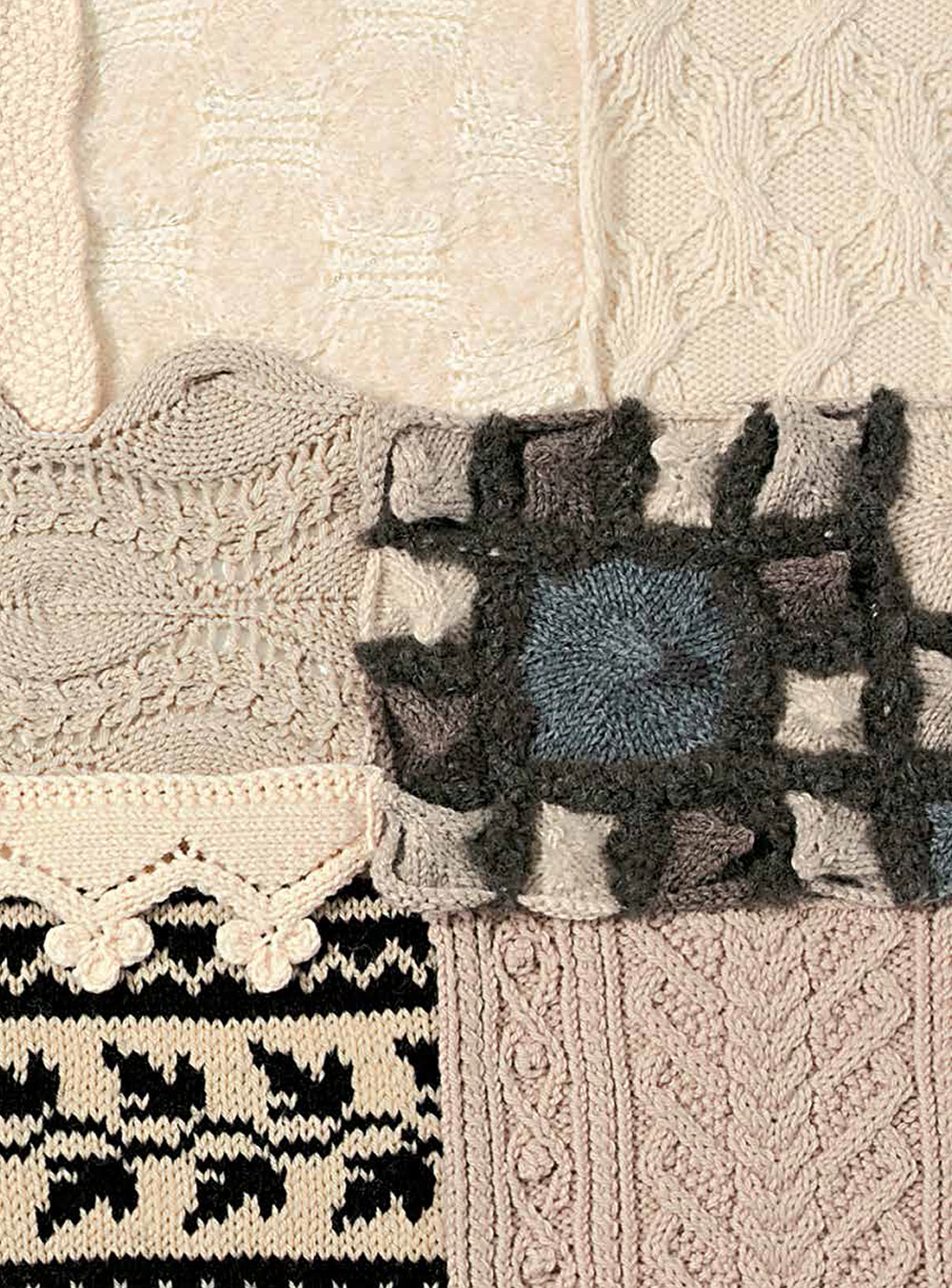 Keiko Okamotos Japanese Knitting Stitches A STITCH DICTIONARY WITH 150 AMAZING PATTERNSTranslated and introduced byGayle Roehm
Keiko Okamotos Japanese Knitting Stitches A STITCH DICTIONARY WITH 150 AMAZING PATTERNSTranslated and introduced byGayle Roehm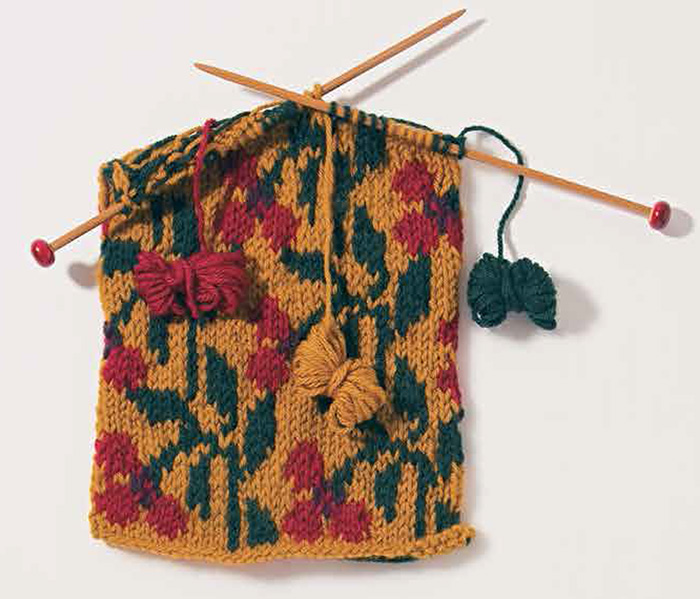
 About the author If you pick up a Japanese knitting magazine or pattern collection, youre almost certain to find the work of Keiko Okamoto. Shes one of Japans bestknown and most prolific hand knitting designers, and she works extensively with magazines, schools and yarn companies. Based in Kobe, she is the proprietor of the Ks K studio (http://atelier-ksk.netJapanese only), which offers classes around Japan as well as her own line of yarn. Shes interested in collaborations between knitting and techniques such as weaving, spinning, sewing and embroidery. This is her first published collection of knitting stitches. If you thought all Japanese knitting was delicate lace, these unusual stitches will change your mind and challenge your skills.
About the author If you pick up a Japanese knitting magazine or pattern collection, youre almost certain to find the work of Keiko Okamoto. Shes one of Japans bestknown and most prolific hand knitting designers, and she works extensively with magazines, schools and yarn companies. Based in Kobe, she is the proprietor of the Ks K studio (http://atelier-ksk.netJapanese only), which offers classes around Japan as well as her own line of yarn. Shes interested in collaborations between knitting and techniques such as weaving, spinning, sewing and embroidery. This is her first published collection of knitting stitches. If you thought all Japanese knitting was delicate lace, these unusual stitches will change your mind and challenge your skills.
Okamoto has developed some extraordinarily innovative stitchwork. Some of these stitches are fairly conventional, some of them are quite challenging, and some are crazy fun. The book includes a few patterns for practice, then use your imagination. Richmore Percent 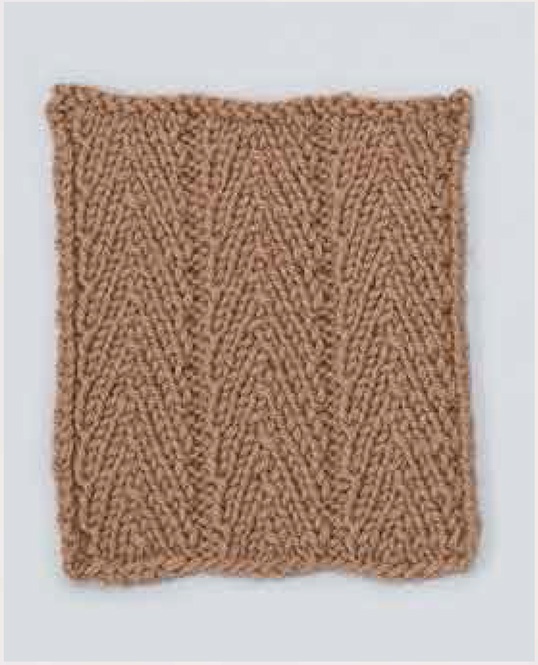 Authors preface Ancient literature tells us that knitting has come down to us from the bronze age. Now its a familiar part of our existence. Its thought-provoking to consider that someone thousands of years ago did exactly what were doing now.
Authors preface Ancient literature tells us that knitting has come down to us from the bronze age. Now its a familiar part of our existence. Its thought-provoking to consider that someone thousands of years ago did exactly what were doing now.
Hand knitting is the process of making a surface with a single strand of yarn made into loops. Only hands and knitting needles are required. Within this simple manual work, a deep level of craft can be achieved. Knitting was born from practical necessity, and a wide variety of shapes and patterns have been added by ingenuity. Even though I repeat the same creative act, Ive created countless patterns, and Im very fond of them. Ive compiled many of my knitting patterns into this collection.
Its a complement to my collection of crochet stitches that was released in 2012. To all of you who love knitting, Ill be truly happy if you keep this book in your hands. 
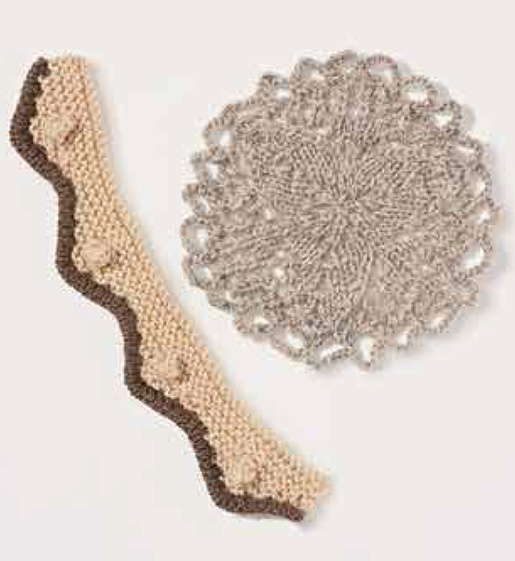 Introduction Be sure to read through this introduction before starting to knit. Youll find important information about interpreting the charts and symbols, identifying the pattern repeats, and using the stitch patterns in a knitted fabric. Chart basics To begin, you should be comfortable knitting from charts. Japanese designs dont provide stitch patterns in words. The chart-phobic knitter should probably give this book a pass.
Introduction Be sure to read through this introduction before starting to knit. Youll find important information about interpreting the charts and symbols, identifying the pattern repeats, and using the stitch patterns in a knitted fabric. Chart basics To begin, you should be comfortable knitting from charts. Japanese designs dont provide stitch patterns in words. The chart-phobic knitter should probably give this book a pass.
Japanese charts normally dont provide a key for every chart, unlike Western patterns. The symbols are standardized, and every Japanese publisher uses the same symbol set. Therefore, a Japanese knitter is expected to know them. For Western knitters, weve added definitions for every symbol in the book, in the Symbol Directory on pages 128-135. Your approach to a chart depends on whether youre working flat or in the round. If youre knitting back and forth: On the right side, read the chart from right to left, in the same sequence that you work the stitches.
On the reverse (or wrong) side, read the chart from left to right, and reverse the stitches, so that your stitches will show up correctly on the right side. Aside from knits and purls, not many stitches are worked on the wrong side. The Symbol Directory provides definitions for reverse side rows, if applicable. If only one definition is given, that particular symbol is only worked on right side rows. If youre knitting in the round, read every row from right to left. About the stitch symbols The single most important thing to remember about working from charts is this: the chart shows the right side of the work. About the stitch symbols The single most important thing to remember about working from charts is this: the chart shows the right side of the work.
Its a visual representation of what your work will look like when its done. Each symbol describes what the stitch will look like on the right side, not what you execute. For example, to create a knit stitch on the right side, you must purl on the reverse side. For these patterns, nothing too complicated is worked on the wrong side. Where appropriate, the Symbol Directory defines the wrong-side maneuvers. As you work through the stitch patterns, youll notice that the symbols look a lot like the stitches they represent.
Just like the overall chart, the symbols are visual representations of what the stitch should look like; theyre a sort of visual code. The symbol for knit 2 together, for instance, has two legs (two stitches are involved) and leans to the right (as the stitch does when complete). Basic stitch symbols may be combined, as well: knit 2 together with a purl dash (horizontal line) below it tells you to purl 2 together. Occasionally, a symbol may be elongated, like the k2togs at the top of pattern #85, to span a no stitch area. Of the various stitch symbols in use around the world, the Japanese symbols look most like their corresponding stitches. As you get used to them, youll probably wish all publishers would adopt this logical system.
The Symbol Directory is cross-referenced to the stitch patterns that use each of the symbols, and many of them reference illustrations with more detailed explanations. There are also some variations or more complex symbols that are used in only one pattern. These are defined next to the appropriate chart. For consistency, Ive used the symbol definitions from Nihon Vogue, the original publisher, as found in Knitting Symbol Book (ISBN 978-4-529-05559-8). Color patterns are keyed on each chart, using symbols different from those for stitches. Crochet symbols Okamoto has used a few crochet stitches as wellsome as edgings, and many as crocheted bobbles.
These are also defined in the Symbol Directory. Blank boxes For most of the charts, youll see a number of blank boxes. Depending on the chart, a blank could mean a knit stitch, a purl stitch or a stockinette stitch. Before you start, check around the chartusually in the lower left cornerto find the definition of the blank box.  = K on RS, P on WS tells you that a blank box should look like a knit on the right side. This means its purled on the wrong side.
= K on RS, P on WS tells you that a blank box should look like a knit on the right side. This means its purled on the wrong side.
Lots of blank boxes indicate stockinette stitch.  = P on RS, K on WS tells you that a blank box should look like a purl on the right side, so its knit on the wrong side. Lots of blank boxes indicate stockinette stitch.
= P on RS, K on WS tells you that a blank box should look like a purl on the right side, so its knit on the wrong side. Lots of blank boxes indicate stockinette stitch.  = St st (in each color) indicates Stockinette stitch. Youll see this in many of the multicolored patterns. This convention keeps the chart cleaner and easier to readyour eye can focus on what you have to do, without a lot of visual noise from the background stitches.
= St st (in each color) indicates Stockinette stitch. Youll see this in many of the multicolored patterns. This convention keeps the chart cleaner and easier to readyour eye can focus on what you have to do, without a lot of visual noise from the background stitches.
Next page
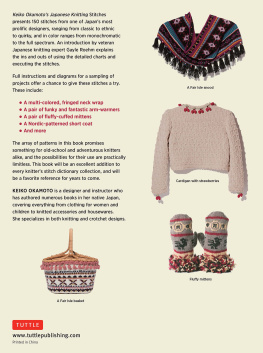
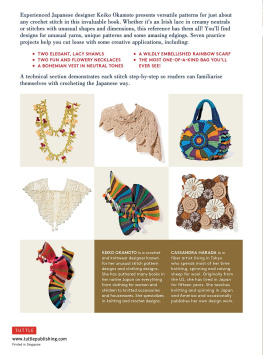
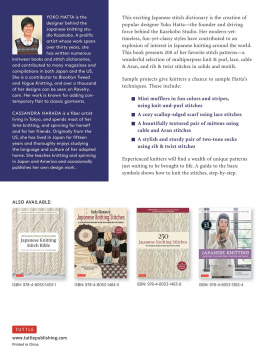
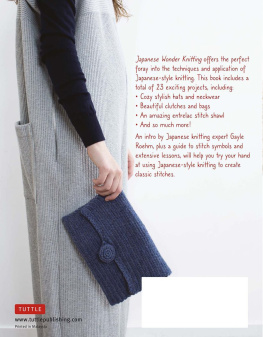
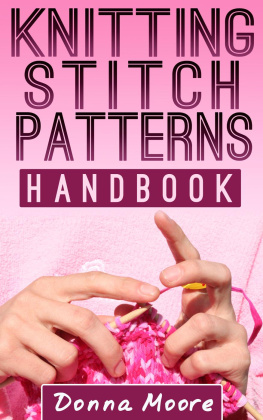
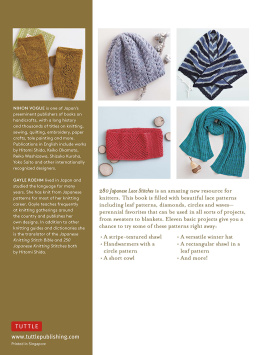
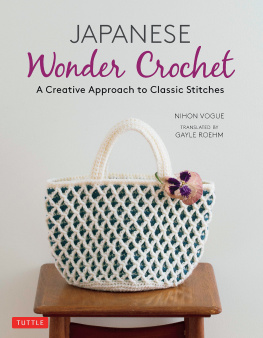
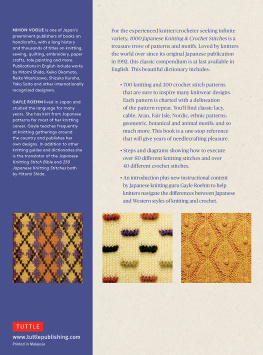


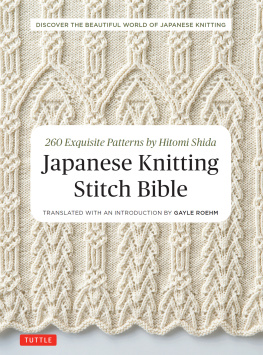

 Keiko Okamotos Japanese Knitting Stitches A STITCH DICTIONARY WITH 150 AMAZING PATTERNSTranslated and introduced byGayle Roehm
Keiko Okamotos Japanese Knitting Stitches A STITCH DICTIONARY WITH 150 AMAZING PATTERNSTranslated and introduced byGayle Roehm
 About the author If you pick up a Japanese knitting magazine or pattern collection, youre almost certain to find the work of Keiko Okamoto. Shes one of Japans bestknown and most prolific hand knitting designers, and she works extensively with magazines, schools and yarn companies. Based in Kobe, she is the proprietor of the Ks K studio (http://atelier-ksk.netJapanese only), which offers classes around Japan as well as her own line of yarn. Shes interested in collaborations between knitting and techniques such as weaving, spinning, sewing and embroidery. This is her first published collection of knitting stitches. If you thought all Japanese knitting was delicate lace, these unusual stitches will change your mind and challenge your skills.
About the author If you pick up a Japanese knitting magazine or pattern collection, youre almost certain to find the work of Keiko Okamoto. Shes one of Japans bestknown and most prolific hand knitting designers, and she works extensively with magazines, schools and yarn companies. Based in Kobe, she is the proprietor of the Ks K studio (http://atelier-ksk.netJapanese only), which offers classes around Japan as well as her own line of yarn. Shes interested in collaborations between knitting and techniques such as weaving, spinning, sewing and embroidery. This is her first published collection of knitting stitches. If you thought all Japanese knitting was delicate lace, these unusual stitches will change your mind and challenge your skills. Authors preface Ancient literature tells us that knitting has come down to us from the bronze age. Now its a familiar part of our existence. Its thought-provoking to consider that someone thousands of years ago did exactly what were doing now.
Authors preface Ancient literature tells us that knitting has come down to us from the bronze age. Now its a familiar part of our existence. Its thought-provoking to consider that someone thousands of years ago did exactly what were doing now.
 Introduction Be sure to read through this introduction before starting to knit. Youll find important information about interpreting the charts and symbols, identifying the pattern repeats, and using the stitch patterns in a knitted fabric. Chart basics To begin, you should be comfortable knitting from charts. Japanese designs dont provide stitch patterns in words. The chart-phobic knitter should probably give this book a pass.
Introduction Be sure to read through this introduction before starting to knit. Youll find important information about interpreting the charts and symbols, identifying the pattern repeats, and using the stitch patterns in a knitted fabric. Chart basics To begin, you should be comfortable knitting from charts. Japanese designs dont provide stitch patterns in words. The chart-phobic knitter should probably give this book a pass. = K on RS, P on WS tells you that a blank box should look like a knit on the right side. This means its purled on the wrong side.
= K on RS, P on WS tells you that a blank box should look like a knit on the right side. This means its purled on the wrong side.